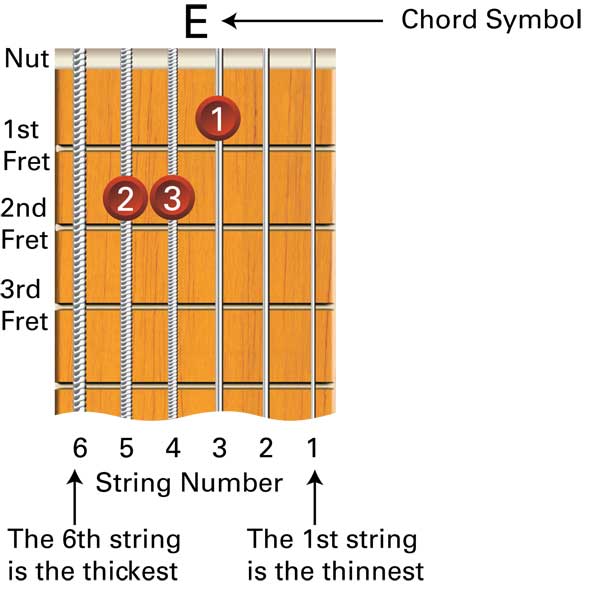
Chord Diagrams Used in This Book
Chords are learned with the help of a chord diagram. This will show you exactly where to place your left hand fingers in order to play a particular chord. A chord diagram is a grid of horizontal and vertical lines representing the strings and frets of the guitar as shown here.
Left Hand Fingering


The black dots show you where to place your left hand fingers. The white number tells you which finger to place on the string just before the fret. If there is no dot on a string, you play it as an open (not fretted) string.
The other chord diagram symbols used in this book are summarized with the following two chord shapes.

A dotted string indicates that string is not to be strummed. An X on the string indicates that string is to dampened by another finger lightly touching it. The string is still strummed as a part of the chord but it is not heard.

A small bar connecting several black dots indicates they are held down by the same finger. This is called barring.